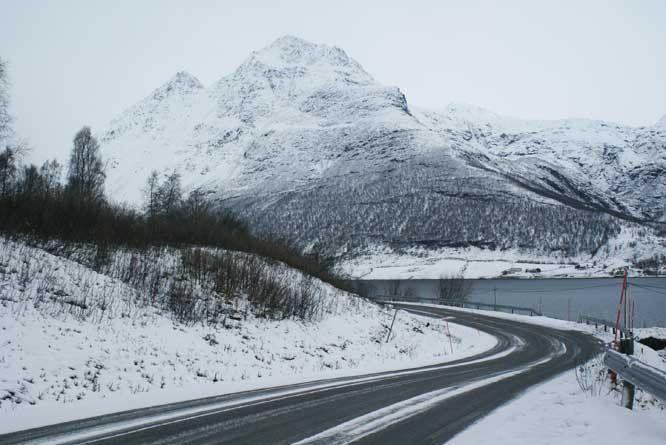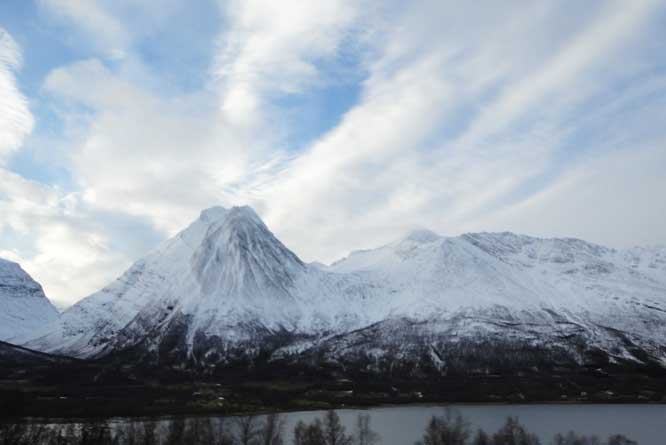Tromso's dramatic post glacial Arctic landscape
If you can try and experience the countryside of the northern Norways arctic circle. Hire a car for a day and drive south on the E8 road from Tromso. The rounded high mountains and long saltwater fjords can be found as soon as you drive over the bridge out of town. Just turn right. (Be aware of the speed cameras on this road.)

After following the coast line for an hour the road goes over a high pass. Stop and get out of your car a number of times to take in the majesty of the highland landscape. At the other end of the pass you rejoin the same fjord and head for the southern end of the Lyngen Alps national park mountain ridge. The E8 joins with the E6 road. Follow the signs for Alta.
Most of Northern Norway was covered under thick ice sheets during the various different ice ages. At the start of the ice age the snow built up in the highlands. It then turned into a glacier collecting rocks as it moved down hill. The glacier was like a giant rasping file with sharp edges. The rocks imbedded in the bottom of the glacier ripped great gullies out of the mountain side.
As more ice built up the more powerful the glaciers became. When one glacier met another glacier they merged to form an even stronger erosion force. Great U shaped valleys were now formed. This is what you are driving through. When you get out of the car imagine a mile of ice above you that was constantly moving.

As the ice moved down the valleys carving out the U shape rather than the normal V shape they cut through other mountain valleys that used to join with the main river. It was like some one had cut through them with a knife. The land they used to flow over had suddenly disappeared. When the ice melted the same stream now went over a cliff face. It produced very attractive waterfalls called hanging valleys. Keep an eye out for them on your drive.
As more and more ice built up it started to cover the tops of some of the smaller mountains. The sculpting effect of the ice smoothed the jagged edges of the mountains. As you drive around the northern Norwegian countryside look up at a high mountain with a rounded summit and then imagine the moving ice cap on top. It is only then that you get the true picture of the height of the ice pack.
Some of the very tall mountains in Northern Norway have jagged peaks. This is because they poked through the top of the ice sheet and were exposed to freezing and thawing of the rain and snow that seeped in to the rock face and when the water cracking of its rock face. As the ice melted the sea levels rose and saltwater flooded into the larger U shaped valleys and formed fjords that are so characteristic of the Norwegian landscape.
Travel books

